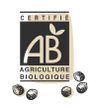Analyze your soil
1°) PHYSICAL ANALYSIS – TYPES OF SOILThe characteristics of the cultivated soil are essential to take into account when adjusting water needs. There are 3 types of soil:• Sandy soil: very draining, it retains very little water. In summer, it heats up quickly, causing the water to evaporate. Watering must therefore be frequent.• Clay soil: water-retaining, it dries out very slowly. It is asphyxiating for the root system and can cause plants to rot. In summer, it becomes very compact and hard to handle. Be careful with excess water.• Silty soil: It is between the other two types of soil. It is more compact than sand but less so than clay. Silty soil is draining but retains enough water and minerals to nourish plants. It is necessary to check the soil moisture before watering. If you do not know the type of your soil, there is a simple and effective method. To do this, take a little soil in your hand. Moisten it and knead it for a few moments. If the mass of soil remains compact, it is clayey soil. If the soil is malleable but the mass breaks, it is loamy soil. On the other hand, if the soil seems rough like sand and does not remain compact, your soil is sandy. Your soil is light, sandy, it is poor soil that dries out easily to enrich with compost. This type of soil is ideal for growing root vegetables: carrots, beets, celeriac, turnips, salsify, radishes. But also potatoes, garlic, shallots, fennel, crosnes, lamb's lettuce, asparagus, beans, peas, etc. For growing tomatoes, a fertilizer rich in potash or compost will be necessary. Your soil is sticky and heavy, it is a clay soil that needs to be worked and amended. Root vegetables should be avoided, but many others will acclimatize very well to this type of soil: artichokes, eggplant, leeks, chicory, cabbage, tomatoes, rhubarb, spinach, beans, peas, etc. Your soil is chalky or basic, it is recognizable by its light color. This type of soil will be perfect for garlic, carrots, beets, radishes, parsnips, beans, peas, lentils, and broad beans. If it is moderately calcareous, tomatoes, lettuce and Jerusalem artichokes will also thrive there.2°) CHEMICAL ANALYSIS - PHThe pH (Potential Hydrogen) is measured on a scale of 0 to 14. The majority of garden soils have a pH between 4 and 9. The ideal is a slightly acidic soil (6.5) which is suitable for most plants. Microorganisms like this type of soil. An acidophilic plant is a plant that grows in soil with an acidic pH (less than 7). Example: rhododendron, azalea, hydrangea, blueberry, etc. A calciolous plant is a plant that grows in soil with a basic pH (between 7 and 8). Example: poppy, cornflower, lavender, elderberry, honeysuckle, etc. ACID-BASE STATUS pH Very acidic soil pH = 5.5 Acidic soil 5.5 7.5 Plants planted in unsuitable soil will suffer and may even die. Before planting, it is important to analyze the pH of your soil. There are different methods: • Using an analysis kit • Using a pH meter • By observing your land • Home tests using red cabbage





